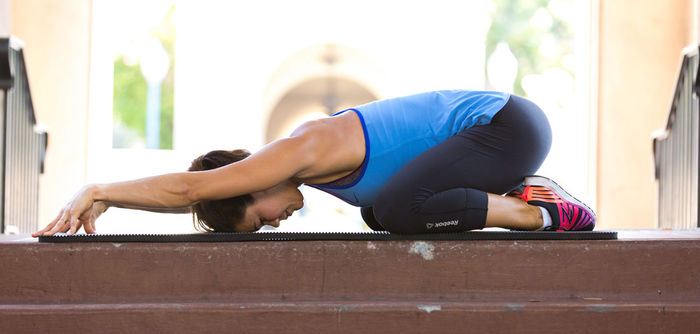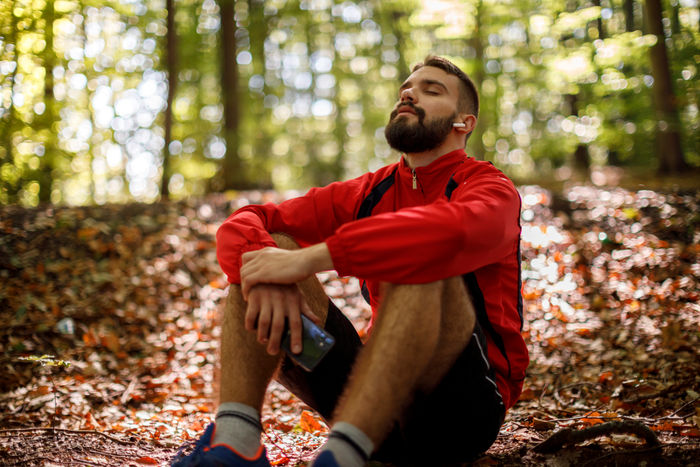Equipment-less indoor and outdoor boot camps continue to appear on many club schedules. Among the reasons they attract so many participants are their ease of set-up, ability to accommodate various fitness levels and constantly changing exercises, which increase the fun and reduce the likelihood of boredom. If you’re thinking about starting a boot camp class, or if you feel your boot camp classes could use a little inspiration, here are some great tips from the best in the business.
“Boot Camp, short for ‘Basic Combat Training’ (BCT), refers to military initial entry training, where new recruits perform countless tactical skills at extremely high standards for several weeks,” explains Sergeant Ken, owner of Startfitness.com. “Drill sergeants are tasked with transforming average human beings into warriors by teaching them multiple combat skills coupled with frequent doses of tactical fitness. Military boot camp is the breeding ground for tactical athletes, the multitasking experts that are able to master any sport or form of fitness necessary to perform their assigned combat skills safely and effectively.”
Such an approach to fitness builds camaraderie. “When social and mental fitness combined are the primary focus of a boot camp exercise program,” says Sergeant Ken, “participants feel much like soldiers do when they fight alongside their squad members, working with teamwork.”
Noel Chelliah, owner of DailyMuscle® Transformation Camp based in Kuala Lumpur, Malaysia, agrees. “People love performing circuits against time and performing as many rounds/reps as possible (or AMRAP),” he says.
With AMRAP, proper form is absolutely essential to ensuring that participants avoid injury and maximize the benefits of their workouts. Pete McCall, owner of PMc Fitness Solutions based in San Diego, advocates teaching participants how to self-select their own intensities. “Smart programming,” he suggests, “includes offering the use of heart-rate monitors to identify whether or not an individual works out at the appropriate intensity to achieve his or her stated goals, and incorporating water and rest breaks to allow appropriate recovery, ensuring that the muscles have the time to replenish muscle glycogen during the workout.”
Chelliah says that many people believe that boot camps offer an environment just for the fit to get fitter. “Not so,” he says, “because I get many inquiries from sedentary people who want to get started, asking where they could start. So we now offer different kinds of boot camps: for first-timers, for athletes, for parents with kids, and even for groups of new moms who could be getting back into shape after a pregnancy.”
Brian Nunez, founder of Fitness Never Sleeps Training Center based in Santa Clara, Calif., believes boot camp’s popularity is tied to the increased interest in adventure races, such as mud runs and obstacle course races. “We are seeing an increase in extreme outdoor training due to the growth in adventure racing,” Nunez argues. “Consequently, people are training together in groups in boot camps more and more each year.”
Some outsiders may look at boot camps as intense playgrounds where participants run around madly and accomplish a great amount of movement in short periods of time. They may also mistakenly believe that is a lack of individual teacher interaction or infrastructure. Not true, says Chelliah. “Today’s boot camps have to guarantee lots of personal attention and social support,” he explains. “We limit our boot camps to a ratio of 15 individuals per instructor. We also assign homework, follow-along personal workout downloads detailing technique and form for participants to practice between workouts, or when they can’t make it for a session. We also offer four-week and eight-week group challenges coupled with nutrition coaching and meals, and Facebook Coaching Groups to compel clients to stay engaged with the program.”
Today, boot camp participants can experience individual learning experiences and opportunities for growth. “Our program at FNS Training Center is based on three pillars of performance: mind, meals and movement,” explains Nunez. “Specifically, we focus on changing one habit at a time. Our boot camp-style classes focus on increasing the quality and efficiency of functional movement patterns. The goal is never to ‘crush’ people, but rather to have our athletes moving better. Total fatigue should never be the goal of any boot camp class.”
Sergeant Ken’s philosophy also incorporates different types of approaches. “We train instructors on several different military fitness formats that integrate the five fitness dimensions: physical, nutritional, emotional, social and spiritual. This comprehensive approach creates an impactful and empowering experience for future instructors.”
For instructors and trainers considering breaking into the boot camp business, undertaking a current market research study in your own demographic is a smart first step. Understanding current pricing and offerings will help you find ground in a market with existing competition.
“Networking with other boot camp leaders will strengthen your position as a fitness leader and enable you to form great relationships with your colleagues,” suggests Chelliah. “For a specific client, it may turn out that you refer a client to a competing boot camp; I often refer prospects to other colleagues when it is more convenient or closer to them. Remember that referrals always work both ways. Connect, don’t compete.”
If you are creating a boot camp business structure with more than one coach, Chelliah recommends that the actual content of your boot camp programming should remain consistent for each type of boot camp population, even as the personalities of individual instructors are allowed to shine through. “Create a manual for your trainers [detailing] everything from the words they use, the class structure, the music choices (make it legal) and the movement descriptions.”
When boot camps first became popular, notes Chelliah, they drew almost exclusively from their army derivations. Today’s boot camp leaders, however, must take care to instruct proper form and technique within all of the current industry-accepted methodology in the field of group fitness. “We advocate ‘teaching form over physique,’” explains Chelliah.
McCall agrees. “A well-designed exercise program will teach form and incorporate a number of different movements in a circuit format that alternate between different body parts and different levels of intensity. With the right approach, [a participant of] any fitness or skill level can participate in a boot camp. Instructors should consider choosing multidirectional patterns that integrate the hips and shoulders simultaneously.”
Sergeant Ken’s team also emphasizes safety by starting each class with what he calls the safety briefing. “We start all boot camps with a quick introduction of the leader and the format, the importance for everyone to work within his or her limits, add regressions where needed, to amplify only when possible, to hydrate frequently and to help others always,” explains Sergeant Ken.
Unique Boot Camp Ideas
- Bikinibootcamp.com offers fun-in-the-sun boot camps for vacationers in exotic locations to take part in boot camp experiences in the sand.
- Fit2date.com offers like-minded singles the opportunity to join boot camps all over the world with orientations and trainings.
- Stacey Lei Krauss offers barefoot boot camp programs through her willpowermethod.com training courses.
- Leigh Crews offers “Zoomers Boot Camps” for active baby boomers using TRX in a circuit format.
- Lawrence Biscontini (author of this blog) offers “Mind-Body Boot camps” in Mykonos, Greece, where clients enjoy a circuit format that includes challenging moves from Pilates, yoga, and tai chi, taught daily during sunset on a local beach.
- Nunez created a “Junkyard Gym,” where the only equipment allowed is anything non-threatening from outside of a conventional gym, such as bricks, tires, logs, buckets, pallets and water jugs.
For more boot-camp tips from Noel Chelliah, check out http://bitly.com/ACEBoot campTips2016findLawrence.
 by
by 







